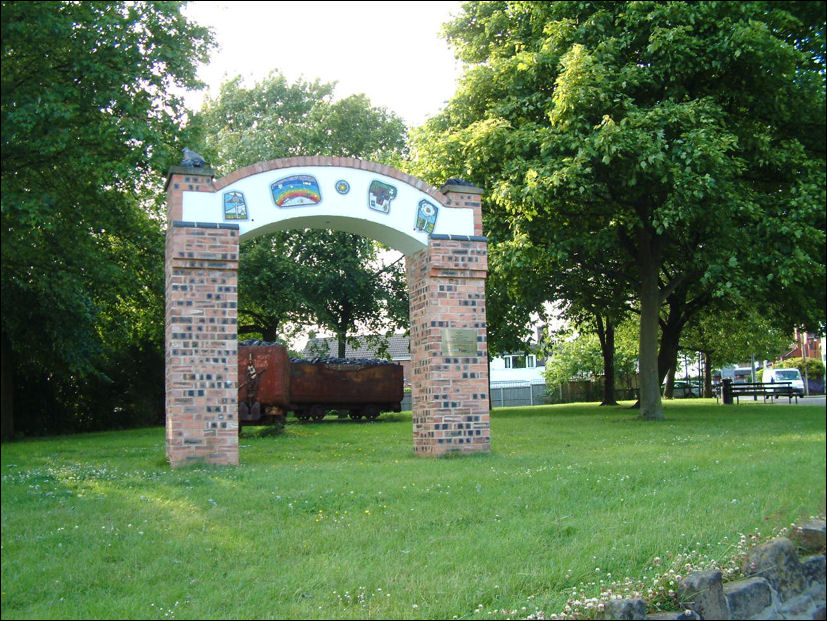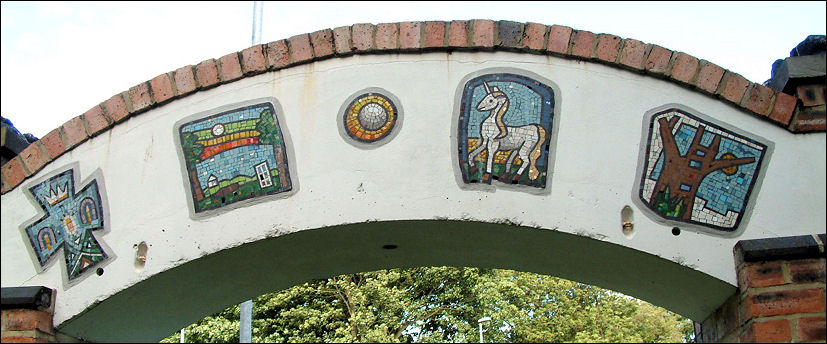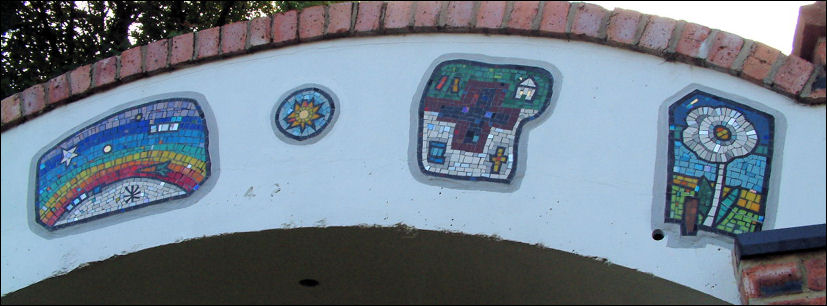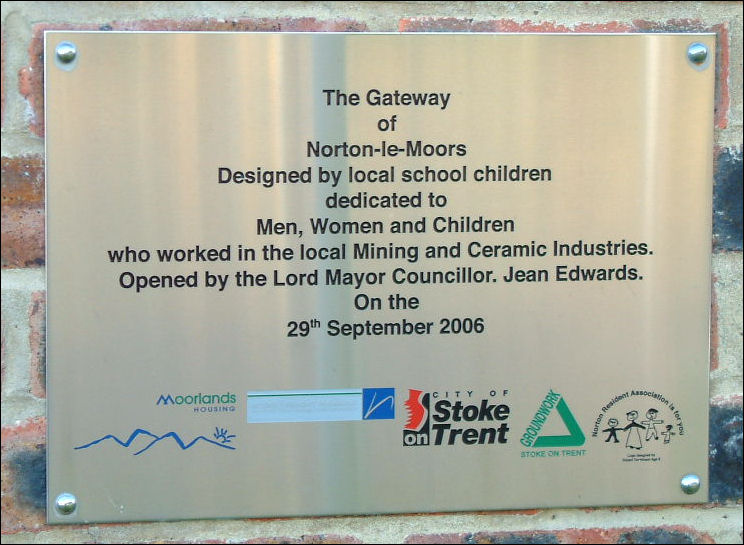|
"NORTON IN THE
MOORS, sometimes called NORTON LE MOORS, is situated in an elevated
position at the northern extremity of the City of Stoke on Trent. Norton
presents a mixture of extensive views towards the Peak District, 20th
century housing estates and the remains of its former industries. It has
a long and varied history.
Norton in the Moors occurs in the Domesday Book of 1086 as Nortone, the
name meaning North town. At the time of the Domesday survey, it was held
by Robert de Stafford. It developed during the Middle Ages because of
its location on the road from Leek to Burslem, later turnpiked as the
Leek to Newcastle road. There are a number of burial entries for
travellers and wayfarers recorded in the parish church registers. The
Chartists passed through Norton on their way from Leek to join with
others at Burslem, causing some damage at a foundry at Norton Green.
Norton’s later development, however, came about largely as a result of
the presence of coal and the introduction of the iron trade to the
parish. A collier is recorded in the parish registers as early as 1598,
although there is a tradition that monks from Abbey Hulton worked the
mines at Bemersley and Ridgway. A survey of 1778 records 14 mines
working in the parish drawing on seams called the Ten Feet, Little Row,
Holly Lane, and Cockshead. Coal was being drawn at Whitfield as early as
1740. By 1867 the Whitfield Colliery Company was trading. It was bought
subsequently in 1872 by the Chatterley Iron Company Limited in order to
secure a regular and convenient supply of coal for their iron furnaces.
In 1804 an iron forge was sold at Ford Green. This was the forerunner of
Ford Green ironworks, later extensively developed by Robert Heath
St Batholomew’s parish church has Saxon origins but was rebuilt in
1737-38 by Richard Trubshawe, one of the Staffordshire dynasty of
builders and architects . There were also extensive additions in 1914.
Until 1807 Norton was a chapelry of Stoke on Trent and until the passing
of Hardwick’s Marriage Act of 1753, was considered to be the Gretna
Green of the area, with an unusually large number of marriages taking
place there.
Methodism was strong in Norton. The first Wesleyan chapel was built in
1805 at the expense of James and Hugh Bourne. They were later to the
founders of Primitive Methodism, having been expelled from Wesleyan
Methodism for holding of one of the first open air Camp Meetings at
Norton in 1807. From 1820 until 1843 the publication of the Primitive
Methodist magazine and the printing of other religious tracts was
carried out from Bemersley in the parish.
The Adderley family, who owned collieries and land at Norton, took their
title of Lords Norton from this village. Charles Bowyer-Adderley was M.P.
for Newcastle under Lyme for 37 years. It was he who was responsible for
the division of the ecclesiastical parish into four parts, namely Brown
Edge, Milton, Smallthorne and Norton."
© Staffordshire Past Tracks
|
![]()



